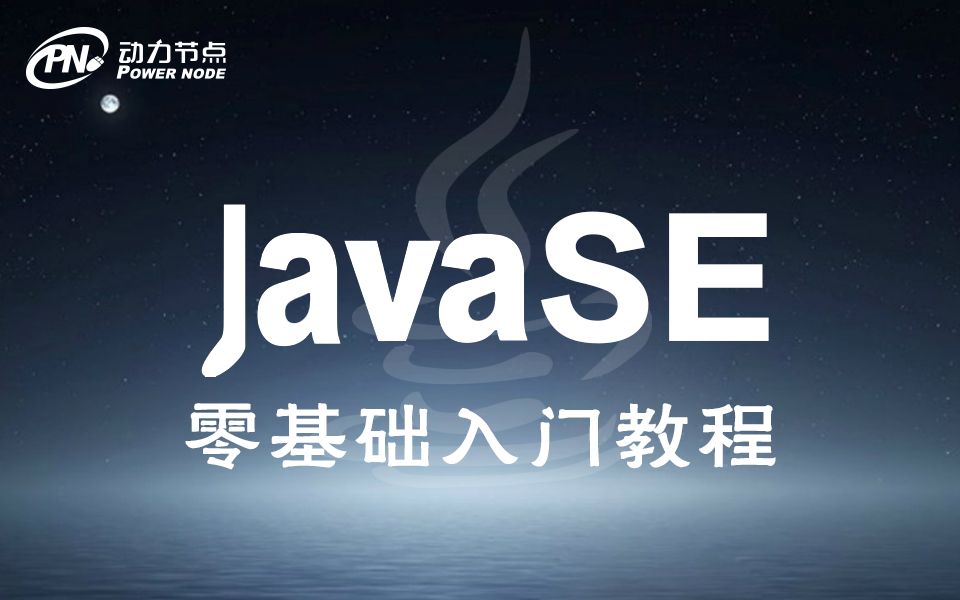- Java多线程同步机制简介
- Java多线程锁
- Java多线程同步代码块Synchronized
- Java多线程同步方法
- Java多线程脏读
- Java多线程出现异常会自动释放锁
- Java多线程死锁
- Java volatile关键字的作用
- Java多线程之volatile非原子性
- Java原子类自增自减操作
- Java CAS多线程
- Java原子变量
- Java中锁的可重入性
- Java ReentrantLock使用
- ReentrantLock可重入性
- Java多线程:lockInterruptibly()方法
- Java多线程:tryLock()方法
- Java多线程:newCondition()方法
- Java公平锁与非公平锁
- Lock锁的常用方法
- Java多线程读写锁
- Java线程组
- Java多线程捕获异常处理
- Hook钩子线程注入
- Java线程池是什么
- 多线程JDK线程池
- Java线程池的底层实现
- Java线程池的拒绝策略
- Java线程池ThreadFactory
- Java监控线程池
- Java线程池扩展
- Java线程池的大小与线程池死锁
- Java线程池异常处理
- Java ForkJoinPool线程池
Java多线程常用的方法
currentThread()方法
Thread.currentThread()方法可以获得当前线程。
Java中的任何一段代码都是执行在某个线程当中的. 执行当前代码的线程就是当前线程。
同一段代码可能被不同的线程执行,因此当前线程是相对的,Thread.currentThread()方法的返回值是在代码实际运行时候的线程对象。
package com.wkcto.threadmehtod;
/**
* 定义线程类
* 分别在构造方法中和run方法中打印当前线程
* Author : 蛙课网老崔
*/
public class SubThread1 extends Thread {
public SubThread1(){
System.out.println("构造方法打印当前线程的名称: " + Thread.currentThread().getName());
}
@Override
public void run() {
System.out.println("run方法打印当前线程名称:" + Thread.currentThread().getName());
}
}
package com.wkcto.threadmehtod;
/**
* 测试当前线程
* Author : 蛙课网老崔
*/
public class Test01CurrentThread {
public static void main(String[] args) {
System.out.println("main方法中打印当前线程:" + Thread.currentThread().getName());
//创建子线程, 调用SubThread1()构造方法, 在main线程中调用构造方法,所以构造方法中 的当前线程就是main线程
SubThread1 t1 = new SubThread1();
// t1.start(); //启动子线程,子线程会调用run()方法,所以run()方法中 的当前线程就是Thread-0子线程
t1.run(); //在main方法中直接调用run()方法,没有开启新的线程,所以在run方法中的当前线程就是main线程
}
}
package com.wkcto.threadmehtod;
/**
* 当前线程的复杂案例
* Author : 蛙课网老崔
*/
public class SubThread2 extends Thread {
public SubThread2(){
System.out.println("构造方法中,Thread.currentThread().getName() : " + Thread.currentThread().getName() );
System.out.println("构造方法,this.getName() : " + this.getName());
}
@Override
public void run() {
System.out.println("run方法中,Thread.currentThread().getName() : " + Thread.currentThread().getName() );
System.out.println("run方法,this.getName() : " + this.getName());
}
}
package com.wkcto.threadmehtod;
/**
* Author : 蛙课网老崔
*/
public class Test02CurrentThread {
public static void main(String[] args) throws InterruptedException {
//创建子线程对象
SubThread2 t2 = new SubThread2();
t2.setName("t2"); //设置线程的名称
t2.start();
Thread.sleep(500); //main线程睡眠500毫秒
//Thread(Runnable)构造方法形参是Runnable接口,调用时传递的实参是接口的实现类对象
Thread t3 = new Thread(t2);
t3.start();
}
}
etName()/getName()
thread.setName(线程名称), 设置线程名称。
thread.getName()返回线程名称。
通过设置线程名称,有助于程序调试,提高程序的可读性, 建议为每个线程都设置一个能够体现线程功能的名称。
isAlive()
thread.isAlive()判断当前线程是否处于活动状态。
活动状态就是线程已启动并且尚未终止。
package com.wkcto.threadmehtod.p2IsAlive;
/**
* Author : 蛙课网老崔
*/
public class SubThread3 extends Thread {
@Override
public void run() {
System.out.println("run方法, isalive = " + this.isAlive()); //运行状态,true
}
}
package com.wkcto.threadmehtod.p2IsAlive;
/**
* 测试线程的活动状态
* Author : 蛙课网老崔
*/
public class Test {
public static void main(String[] args) {
SubThread3 t3 = new SubThread3();
System.out.println("begin==" + t3.isAlive()); //false,在启动线程之前
t3.start();
System.out.println("end==" + t3.isAlive()); //结果不一定,打印这一行时,如果t3线程还没结束就返回true, 如果t3线程已结束,返回false
}
}
sleep()
Thread.sleep(millis); 让当前线程休眠指定的毫秒数。
当前线程是指Thread.currentThread()返回的线程。
package com.wkcto.threadmehtod.p3sleep;
/**
* 子线程休眠
* Author : 蛙课网老崔
*/
public class SubThread4 extends Thread {
@Override
public void run() {
try {
System.out.println("run, threadname=" + Thread.currentThread().getName()
+ " ,begin= " + System.currentTimeMillis());
Thread.sleep(2000); //当前线程睡眠2000毫秒
System.out.println("run, threadname=" + Thread.currentThread().getName()
+ " ,end= " + System.currentTimeMillis());
} catch (InterruptedException e) {
//在子线程的run方法中, 如果有受检异常(编译时异常)需要处理,只有选择捕获处理,不能抛出处理
e.printStackTrace();
}
}
}
package com.wkcto.threadmehtod.p3sleep;
/**
* Author : 蛙课网老崔
*/
public class Test {
public static void main(String[] args) {
SubThread4 t4 = new SubThread4();
System.out.println("main__begin = " + System.currentTimeMillis());
// t4.start(); //开启新的线程
t4.run(); //在main线程中调用实例方法run(),没有开启新的线程
System.out.println("main__end = " + System.currentTimeMillis());
}
}
package com.wkcto.threadmehtod.p3sleep;
/**
* 使用线程休眠Thread.sleep完成一个简易的计时器
* Author : 蛙课网老崔
*/
public class SimpleTimer {
public static void main(String[] args) {
int remaining = 60; //从60秒开始计时
//读取main方法的参数
if (args.length == 1){
remaining = Integer.parseInt(args[0]);
}
while(true){
System.out.println("Remaining: " + remaining);
remaining--;
if (remaining < 0 ){
break;
}
try {
Thread.sleep(1000); //线程休眠
} catch (InterruptedException e) {
e.printStackTrace();
}
}
System.out.println("Done!!");
}
}
getId()
thread.getId()可以获得线程的唯一标识。
注意:
某个编号的线程运行结束后,该编号可能被后续创建的线程使用。
重启的JVM后,同一个线程的编号可能不一样。
package com.wkcto.threadmehtod.p4getid;
/**
* Author : 蛙课网老崔
*/
public class SubThread5 extends Thread {
@Override
public void run() {
System.out.println("thread name = " + Thread.currentThread().getName()
+ ", id == " + this.getId() );
}
}
package com.wkcto.threadmehtod.p4getid;
/**
* Author : 蛙课网老崔
*/
public class Test {
public static void main(String[] args) {
System.out.println( Thread.currentThread().getName() + " , id = " + Thread.currentThread().getId());
//子线程的id
for(int i = 1; i <= 100; i++){
new SubThread5().start();
try {
Thread.sleep(100);
} catch (InterruptedException e) {
e.printStackTrace();
}
}
}
}
yield()
Thread.yield()方法的作用是放弃当前的CPU资源。
package com.wkcto.threadmehtod.p5yield;
/**
* 线程让步
* Author : 蛙课网老崔
*/
public class SubThread6 extends Thread {
@Override
public void run() {
long begin = System.currentTimeMillis();
long sum = 0;
for(int i = 1; i <= 1000000; i++){
sum += i;
Thread.yield(); //线程让步, 放弃CPU执行权
}
long end = System.currentTimeMillis();
System.out.println("用时: " + (end - begin));
}
}
package com.wkcto.threadmehtod.p5yield;
/**
* Author : 蛙课网老崔
*/
public class Test {
public static void main(String[] args) {
//开启子线程,计算累加和
SubThread6 t6 = new SubThread6();
t6.start();
//在main线程中计算累加和
long begin = System.currentTimeMillis();
long sum = 0;
for(int i = 1; i <= 1000000; i++){
sum += i;
}
long end = System.currentTimeMillis();
System.out.println("main方法 , 用时: " + (end - begin));
}
}
setPriority()
thread.setPriority( num ); 设置线程的优先级。
java线程的优先级取值范围是 1 ~ 10 , 如果超出这个范围会抛出异常IllegalArgumentException。
在操作系统中,优先级较高的线程获得CPU的资源越多。
线程优先级本质上是只是给线程调度器一个提示信息,以便于调度器决定先调度哪些线程. 注意不能保证优先级高的线程先运行。
Java优先级设置不当或者滥用可能会导致某些线程永远无法得到运行,即产生了线程饥饿。
线程的优先级并不是设置的越高越好,一般情况下使用普通的优先级即可,即在开发时不必设置线程的优先级。
线程的优先级具有继承性, 在A线程中创建了B线程,则B线程的优先级与A线程是一样的。
package com.wkcto.threadmehtod.p6priority;
/**
* Author : 蛙课网老崔
*/
public class ThreadA extends Thread {
@Override
public void run() {
long begin = System.currentTimeMillis();
long sum = 0 ;
for(long i = 0 ; i<= 10000000000L; i++){
sum += i;
}
long end = System.currentTimeMillis();
System.out.println("thread a : " + (end - begin));
}
}
package com.wkcto.threadmehtod.p6priority;
/**
* Author : 蛙课网老崔
*/
public class Test {
public static void main(String[] args) {
ThreadA threadA = new ThreadA();
threadA.setPriority(1);
threadA.start();
ThreadB threadB = new ThreadB();
threadB.setPriority(10);
threadB.start();
}
}
interrupt()
中断线程。
注意调用interrupt()方法仅仅是在当前线程打一个停止标志,并不是真正的停止线程。
package com.wkcto.threadmehtod.p7interrupt;
/**
* Author : 蛙课网老崔
*/
public class SubThread2 extends Thread {
@Override
public void run() {
super.run();
for(int i = 1; i <= 10000; i++){
//判断线程的中断标志,线程有 isInterrupted()方法,该方法返回线程的中断标志
if ( this.isInterrupted() ){
System.out.println("当前线程的中断标志为true, 我要退出了");
// break; //中断循环, run()方法体执行完毕, 子线程运行完毕
return; //直接结束当前run()方法的执行
}
System.out.println("sub thread --> " + i);
}
}
}
package com.wkcto.threadmehtod.p7interrupt;
/**
* Author : 蛙课网老崔
*/
public class Test02 {
public static void main(String[] args) {
SubThread2 t1 = new SubThread2();
t1.start(); ///开启子线程
//当前线程是main线程
for(int i = 1; i<=100; i++){
System.out.println("main ==> " + i);
}
//中断子线程
t1.interrupt(); ////仅仅是给子线程标记中断,
}
}
setDaemon()
Java中的线程分为用户线程与守护线程。
守护线程是为其他线程提供服务的线程,如垃圾回收器(GC)就是一个典型的守护线程。
守护线程不能单独运行, 当JVM中没有其他用户线程,只有守护线程时,守护线程会自动销毁, JVM会退出。
package com.wkcto.threadmehtod.p8daemon;
/**
* Author : 蛙课网老崔
*/
public class SubDaemonThread extends Thread {
@Override
public void run() {
super.run();
while(true){
System.out.println("sub thread.....");
}
}
}
package com.wkcto.threadmehtod.p8daemon;
/**
* 设置线程为守护线程
* Author : 蛙课网老崔
*/
public class Test {
public static void main(String[] args) {
SubDaemonThread thread = new SubDaemonThread();
//设置线程为守护线程
thread.setDaemon(true); //设置守护线程的代码应该在线程启动前
thread.start();
//当前线程为main线程
for(int i = 1; i <= 10 ; i++){
System.out.println("main== " + i);
}
//当main线程结束, 守护线程thread也销毁了
}
}





